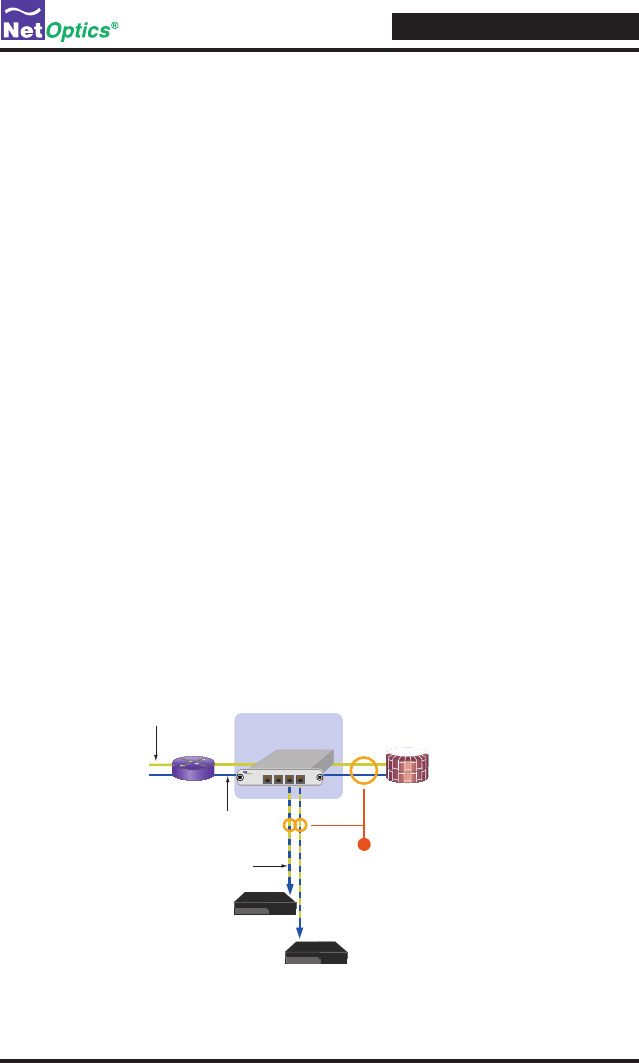
10/100 Port Aggregator Tap
6
Each using a single NIC, the monitoring
devices both receive all combined traffic
from Side A and Side B, including physical
layer errors.
State 1: Side A + Side B is less than or equal to 100%
of the NIC's receive capacity.
Example: On a 100 Mbps link, Side A is at 30 Mbps and Side B is at 50 Mbps.
The NIC receives 80 Mbps of traffic (80% utilization), so no memory is required
for the monitoring device NIC to process all full-duplex traffic.
FirewallRouter
Monitoring
Device 1
1
Active Response Dual
Port Aggregator Tap
Monitoring
Device 2
Side B
Side A
Side A +
Side B
®
www.netoptics.com
B 1 2A
Application Diagrams: Memory Operation
All trafc that passes through the Tap is sent to the monitoring device NIC on
a rst-in, rst-out basis, including trafc that is temporarily stored in memory.
(If two packets enter at the same time then one packet is processed while the
other is stored briey in memory, preventing collisions.)
When there is a burst of data, trafc in excess of the NIC's capacity is sent to
the Tap's memory. Up to one megabyte of data per side of the full-duplex
stream can be stored in memory. Memory continues to ll until its capacity is
reached, or the burst ends – whichever comes rst.
In both cases, the Tap applies a rst-in, rst out procedure, processing stored
data before new data from the link. If memory lls before the burst ends, the
memory stays lled as the stored data is processed – data that leaves the buffer
is immediately replaced. If the burst ends before the memory lls, memory
clears until the full megabyte of capacity is available, or until another burst in
excess of the NIC's capacity requires additional memory.
The following three diagrams illustrate a simple example of a 100 Mbps NIC
moving from 80 percent utilization, to 140 percent utilization, then back to 80
percent utilization. If you have PA-CU-AR model, there is only one monitor
port.
Figure 4: 80% Utilization


















